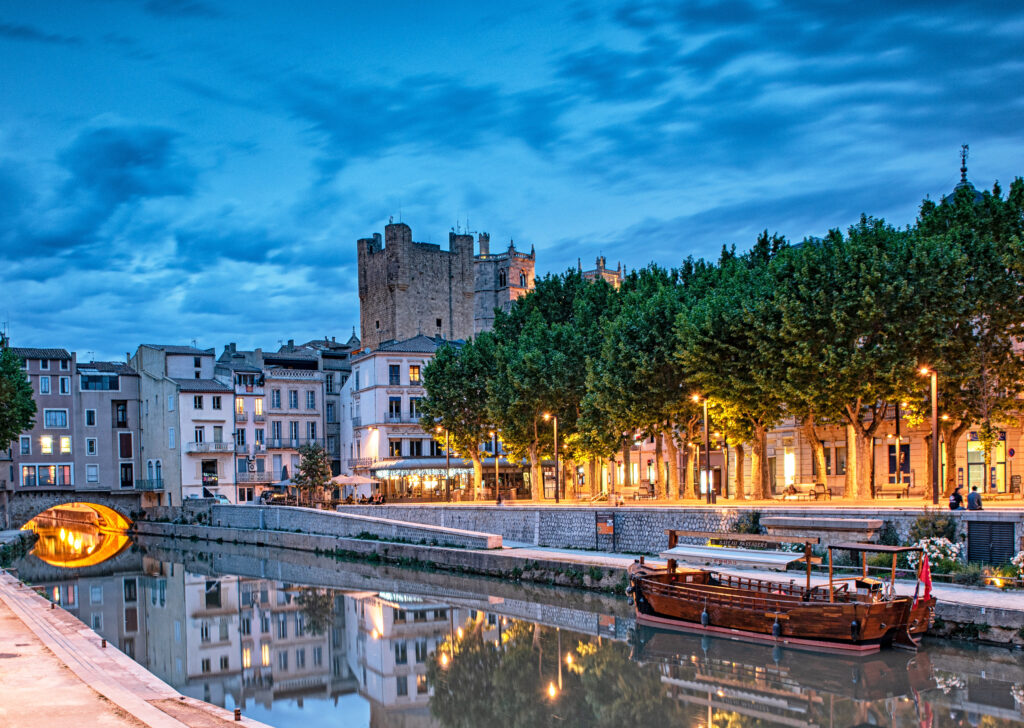
Narbonne, a town in the south of France in the Aude department of the Occitanie region, is a tourist destination brimming with treasures to discover. With its rich historical heritage, breathtaking natural landscapes and delicious gastronomy, Narbonne has something for every type of traveler. In this article, we take a look at the 16 must-sees in Narbonne, to help you plan your stay and make sure you don't miss a thing of this thousand-year-old city. Whether you're a lover of history, nature or good food, follow the guide and let yourself be charmed by Narbonne!
1. What to do in Narbonne Visit downtown Narbonne
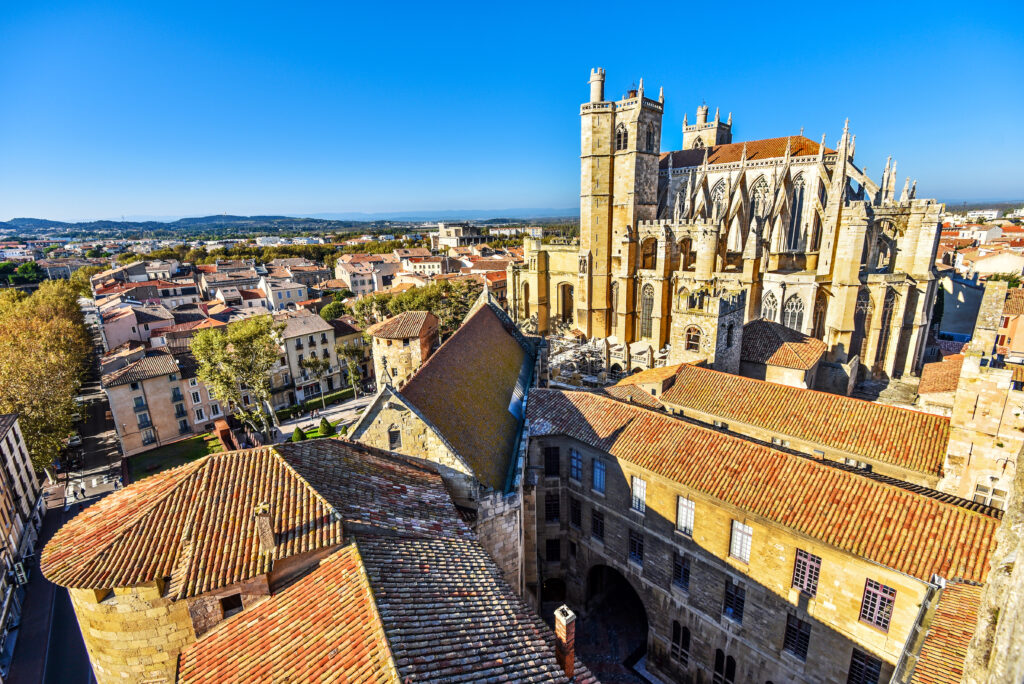
With over 300 days of sunshine a year, Narbonne is a must-visit destination in the Aude region where the gentle way of life reigns, to be discovered or rediscovered with family or friends all year round!
Narbonne is a thousand-year-old city brimming with historical and architectural treasures. Narbonne's city center, with its pedestrian streets and lively squares, is a must for discovering the city's heritage . There are numerous monuments to admire, including the Cathedral Saint-Just-et-Saint-Pasteur, a 13th-century Gothic building, the Palais des Archevêques, a former episcopal palace that today houses the Musée d'Art et d'Histoire, and the Canal de la Robine, a UNESCO World Heritage Site.
Click here to book your private guided tour of Narbonne with a national tour guide.
2. Saint-Just-et-Saint-Pasteur Cathedral
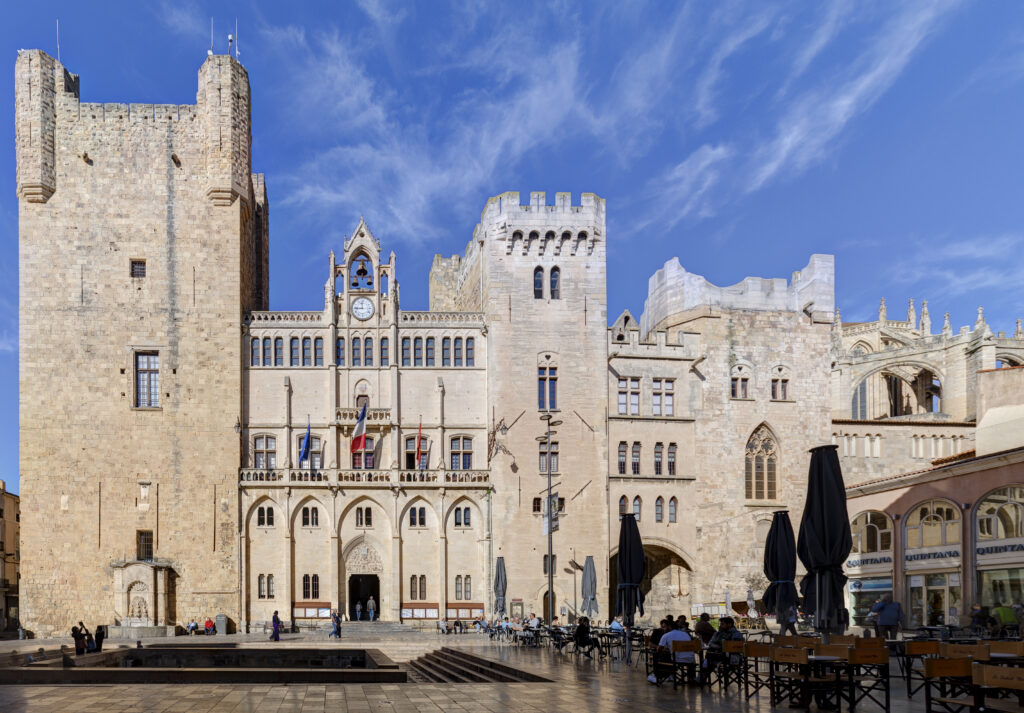
The Saint-Just-et-Saint-Pasteur cathedral is one of Narbonne's most emblematic monuments. Built in the 13th century, this Gothic cathedral is dedicated to Saint Just and Saint Pasteur, two bishops of Narbonne martyred in the 3rd century, and is one of the largest in France (124 meters long and 41 meters high). The Saint-Just-et-Saint-Pasteur cathedral is remarkable for its Southern Gothic architecture, with soaring vaults, flying buttresses and colorful stained-glass windows. There are many decorative elements to admire, including gargoyles, sculptures and murals. The cathedral also houses a treasure trove of liturgical objects and works of art, including reliquaries, statues and tapestries.
3. What to do in Narbonne Visit the Abbey of Sainte-Marie de Fontfroide
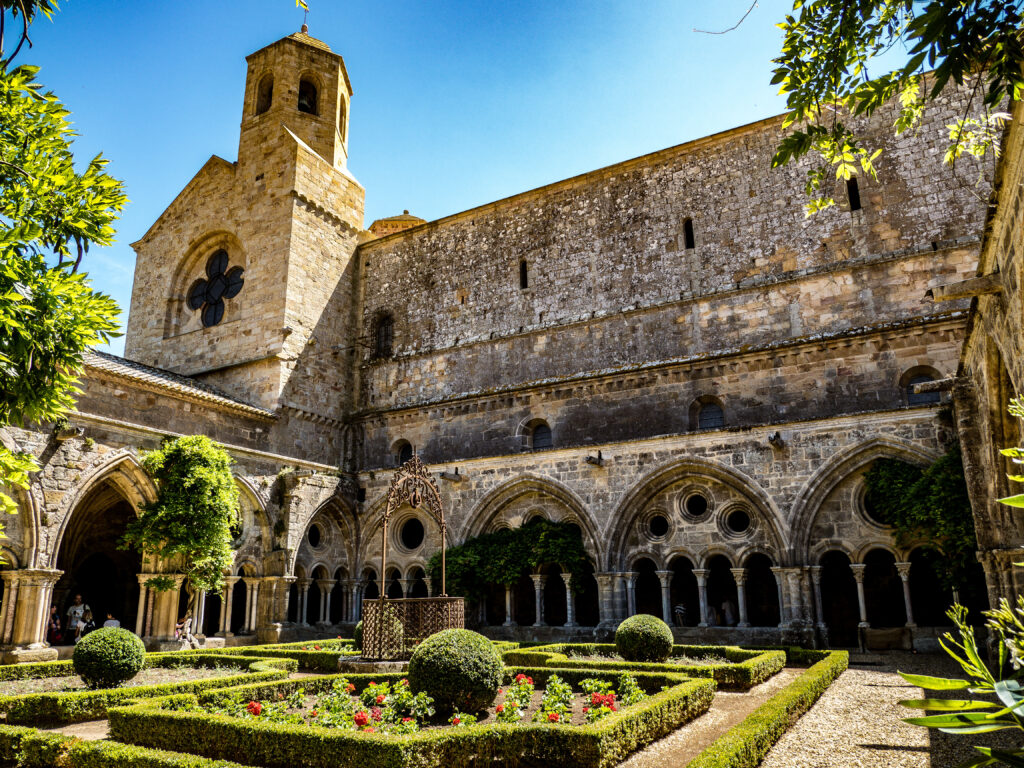
Located some fifteen kilometers from the city, Sainte-Marie de Fontfroide Abbey is a jewel of medieval architecture and one of the most visited sites in the Narbonne region . Founded in the 11th century, Fontfroide Abbey reached its apogee in the 13th century, before gradually declining. Restored in the 19th century, it is now a listed historic monument. A visit to the abbey includes the abbey church, with its barrel vaults and sculpted capitals, the cloister, with its arcaded galleries, and the conventual buildings, such as the chapter house and refectory.
Fontfroide Abbey is also renowned for its gardens, which cover more than 10 hectares . Here you can admire old roses, irises, lavender and many other plant species.
4. Narbonne Archaeological Museum

Did you know? Narbonne is one of the 10 best towns in France in which to retire. Between the various museums, there's plenty to keep you entertained! And above all, the town of Narbonne offers an interesting range of cultural and sporting activities for senior citizens.
The Musée Archéologique de Narbonne is a museum dedicated to the history of the town and its region, from prehistory to medieval times. Housed in the former archbishop's palace, the museum boasts an exceptional collection of archaeological artefacts, bearing witness to the history of Narbonne and its region. It is divided into several sections, tracing the history of the city and its region from the earliest settlements to the medieval period. A wide range of objects can be admired, including pottery, jewelry, weapons, coins and sculptures. The museum also features reconstructions of archaeological sites, such as Narbonne's Roman forum, and models of ancient ships.
5. Archbishop's Palace Museum
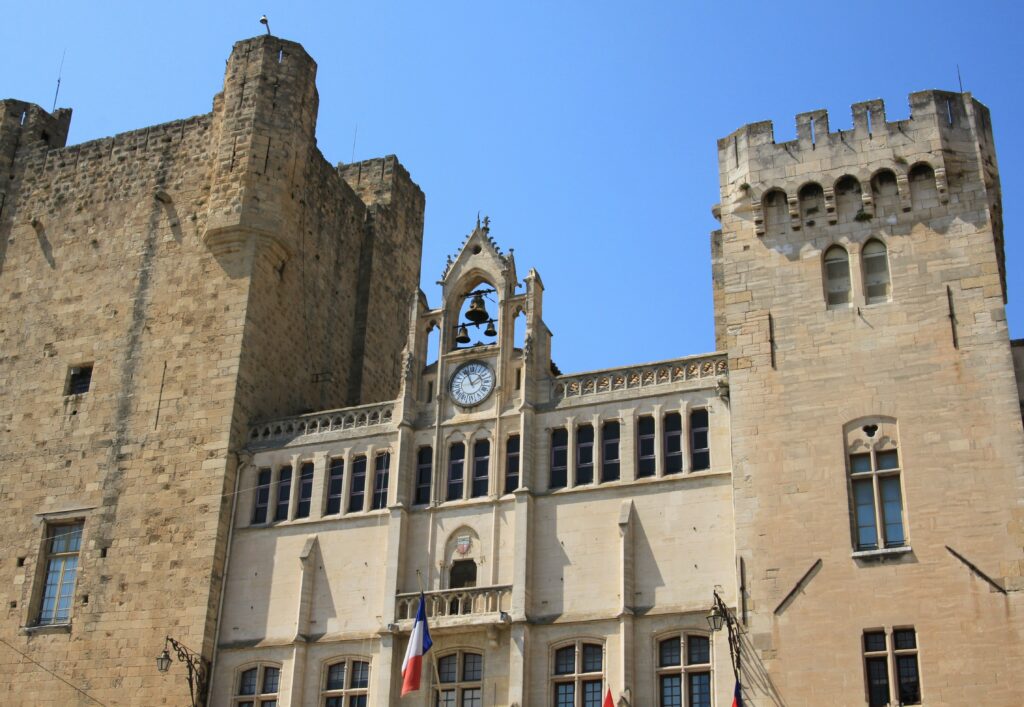
The Palais-Musée des Ar chevêques is a historic monument in Narbonne, now home to the city's Museum of Art and History. Built in the 13th century, this episcopal palace was the residence of the Archbishops of Narbonne until the French Revolution. The Palais-Musée des Archevêques is an imposing edifice, with its towers, curtain walls and ramparts. It comprises a number of buildings, including the Gilles Aycelin tower, the Saint-Martial tower and the keep, all of which offer breathtaking views of the city and its surroundings. The Musée d'Art et d'Histoire boasts a rich and varied collection, tracing the history of Narbonne and its region from prehistory to the present day. On display are paintings, sculptures, objets d'art and archaeological objects.
6. What to do in Narbonne Visit the Via Domitia
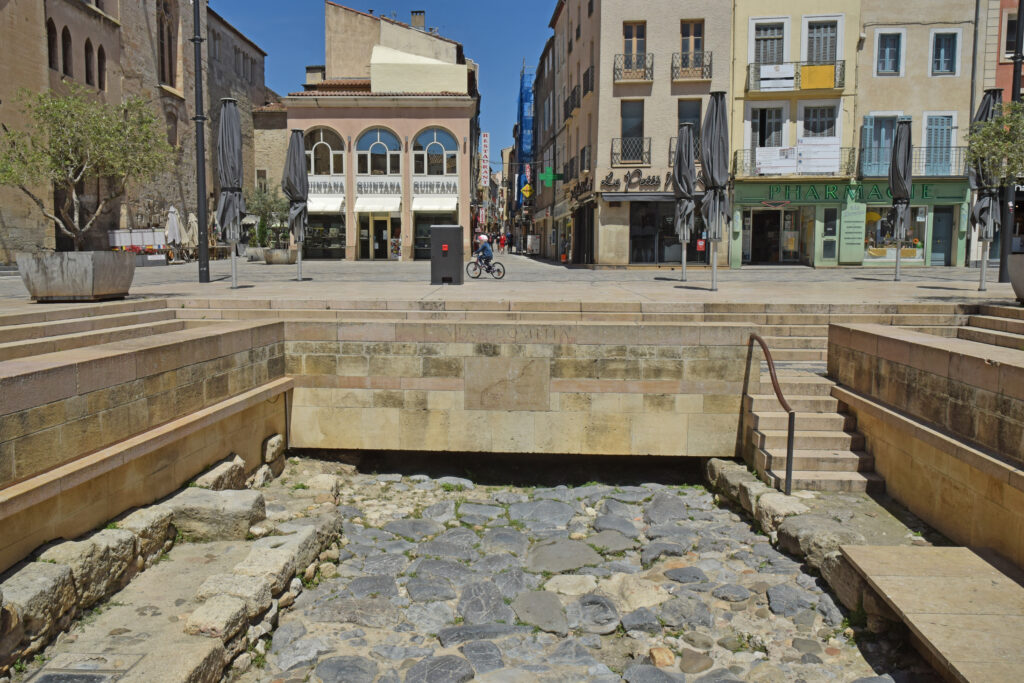
Perhaps you don't know: the Romans made Narbonne the capital of an immense region stretching from the Pyrenees to the Alps. Looking for traces of Narbonne's Roman past in today's city? There are many, for Narbonne la Romaine deserves its name! The Via Domitia is an ancient Roman road that linked Italy to Spain via Narbonne Gaul. Built in the 2nd century BC, it was one of the most important roads in the Roman Empire, and played a major role in the region's economic and cultural development. It was discovered in 1997, quite by chance, on the Place de l'Hôtel-de-Ville, while the municipality was undertaking urban planning work. Just imagine the Roman chariots rolling over these polished stones, and you'll be transported back to the days of yore!
7. The House of the Three Nourrices
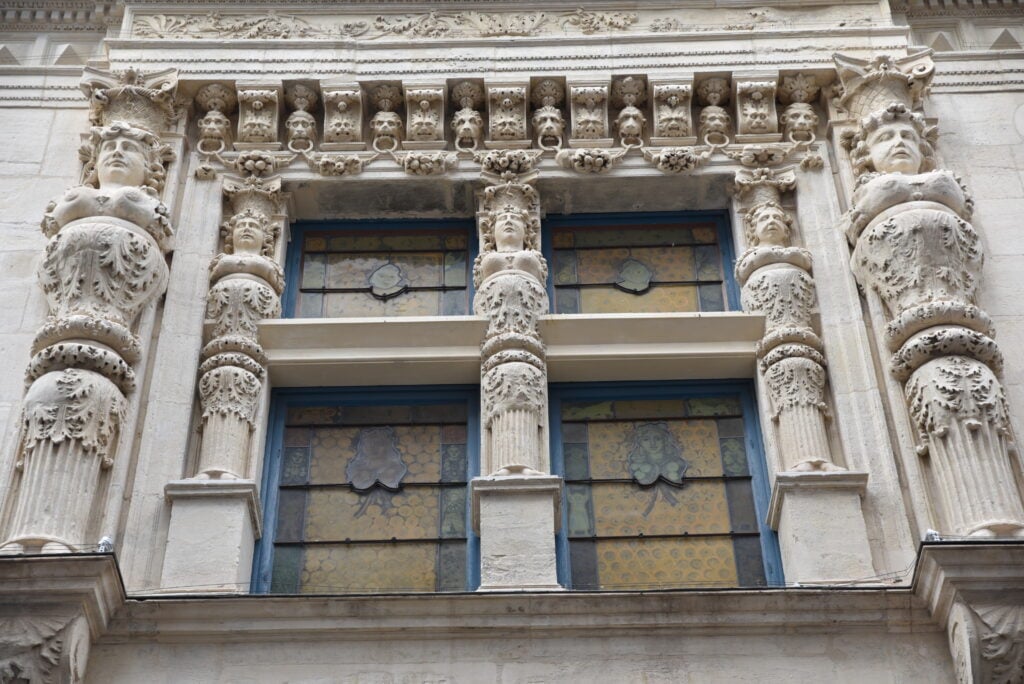
The Maison des Trois N ourrices is a historic monument in Narbonne, located in the city center near the Saint-Just-et-Saint-Pasteur cathedral. Dating back to the 13th century, it is one of the city's oldest civil buildings. The Maison des Trois Nourrices is remarkable for its facade, which is adorned with three sculptures depicting women nursing children. Dating back to the 14th century, these sculptures are a symbol of charity and motherhood. The Maison des Trois Nourrices is open to the public and today houses a museum dedicated to the history of the town of Narbonne.
8. The Roman Horréum Museum
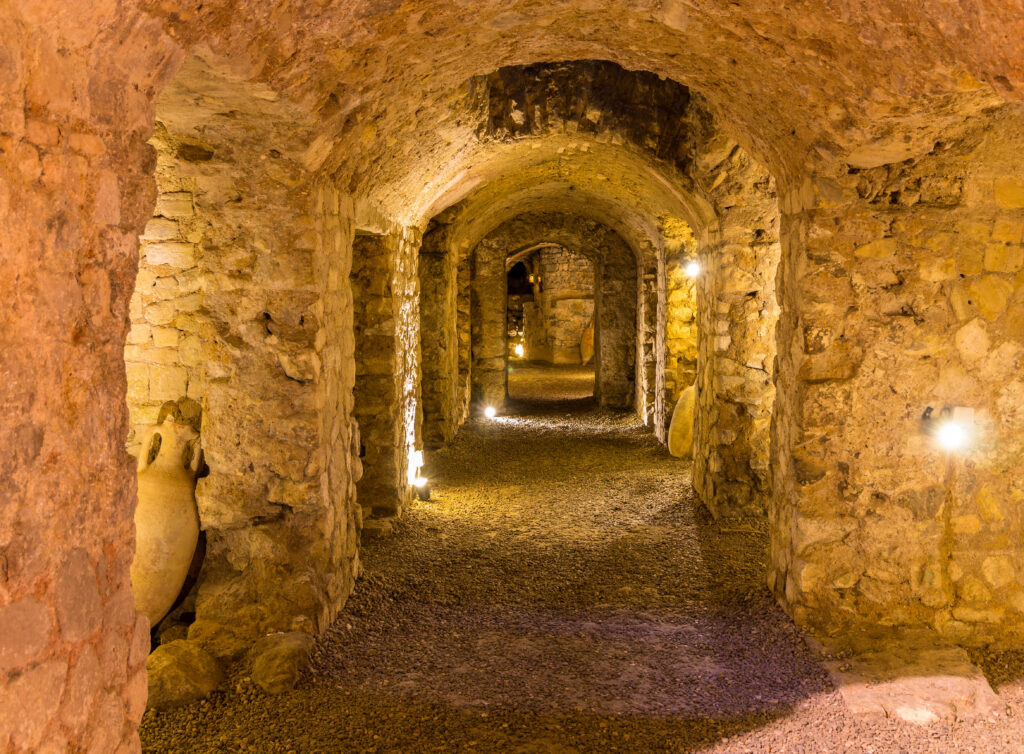
The Musée Roman Horréum is an archaeological museum housed in the basement of a former episcopal palace, the Palais-Musée des Archevêques, which displays the remains of a horréum, a Roman warehouse dating from the 1st century BC. Narbonne's horreum is one of the largest and best-preserved in the Roman Empire. It is made up of several underground galleries, covering more than 1,000 square meters. The galleries are supported by pillars and barrel vaults, and are lit by skylights.
The Musée Roman Horréum showcases the remains of the horréum, as well as numerous archaeological objects bearing witness to daily life in Narbonne in Roman times. On display are amphorae, pottery, jewelry, coins and sculptures. The museum also features reconstructions of archaeological sites, such as Narbonne's Roman forum, and models of ancient ships.
9. Take a tour of Les Halles de Narbonne
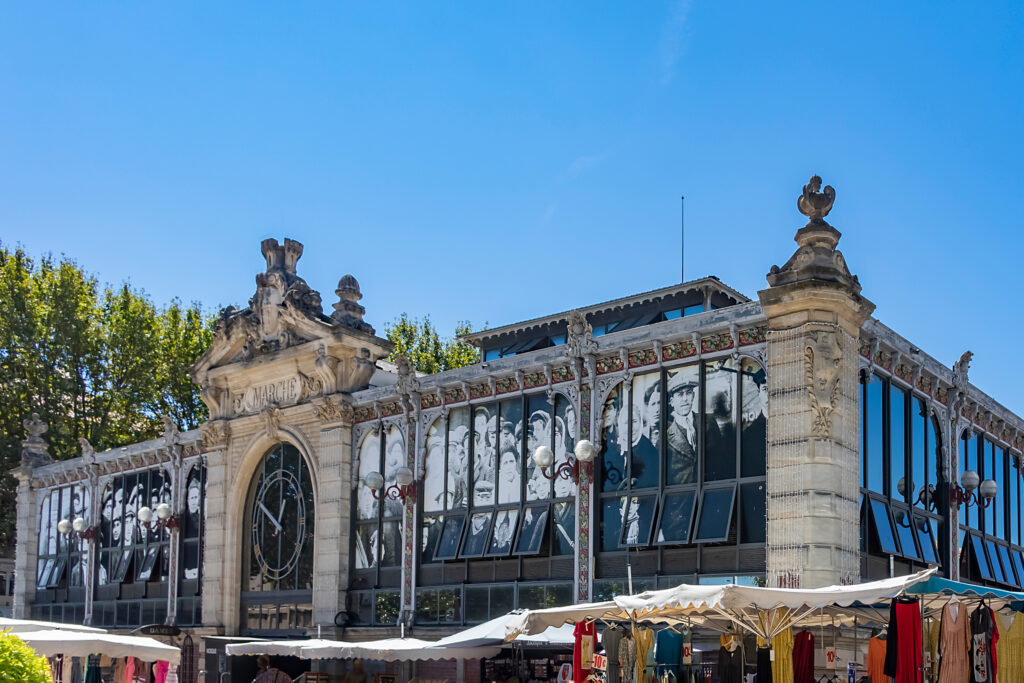
Les Halles de Narbonne is a covered market located in downtown Narbonne, where you can discover the region's local produce and culinary specialties. Les Halles de Narbonne is open every day except Monday, and offers a wide variety of fresh, quality produce. You'll find stalls selling fruit and vegetables, meats and charcuterie, fish and seafood, cheeses and dairy products, as well as pastries and confectionery. Les Halles is also the place to eat, with numerous bars and restaurants serving traditional dishes and local specialties.
You can sample oysters from Bouzigues, mussels from the Etang de Thau, olives from Lucques, Languedoc wines, sheep's and goat's cheeses, charcuterie and pastries.
10. What to do in Narbonne Stroll along the Canal de la Robine
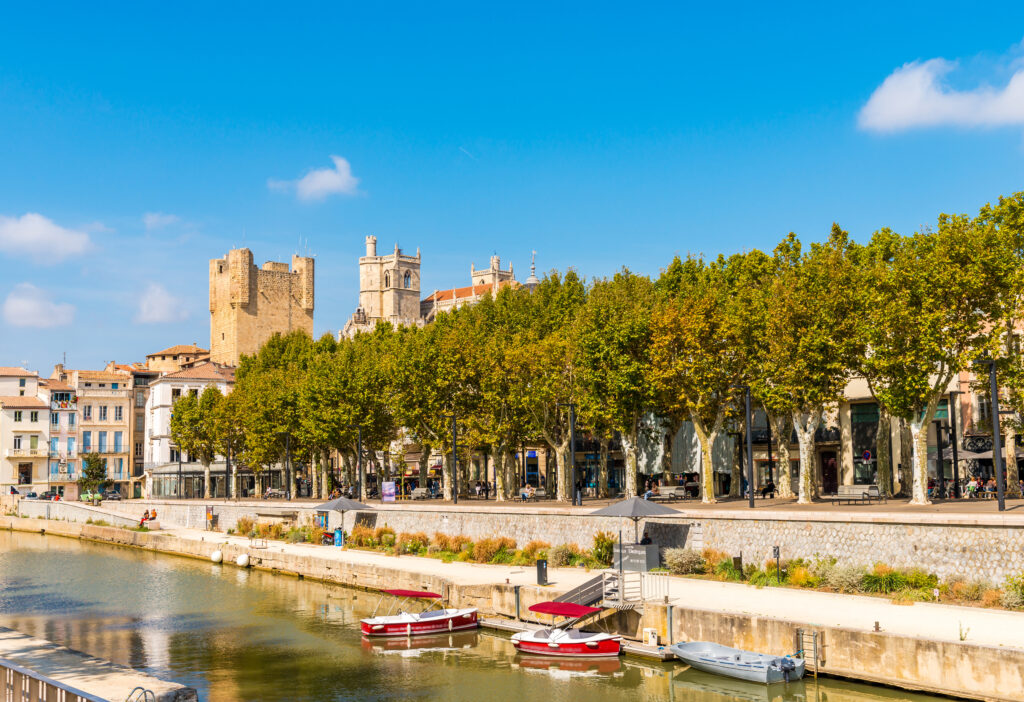
The Canal de la Robine is a navigable canal that runs through the town of Narbonne in southern France. Built in the 18th century, it links the Canal du Midi to the Mediterranean Sea and is a UNESCO World Heritage site. A stroll along the Canal de la Robine will allow you to discover the charms of Narbonne and the surrounding area. The canal is lined with century-old plane trees, gardens and parks, and offers breathtaking views of the city's historic monuments, such as the Saint-Just-et-Saint-Pasteur cathedral and the Palais-Musée des Archevêques.
The Canal de la Robine is also a great place to stroll and relax, where you can cycle, rollerblade, jog or simply stroll with family and friends. You can rent bicycles or electric boats to discover the canal and its surroundingsin an original and environmentally-friendly way.
11. What to do in Narbonne Visit Charles Trenet's birthplace
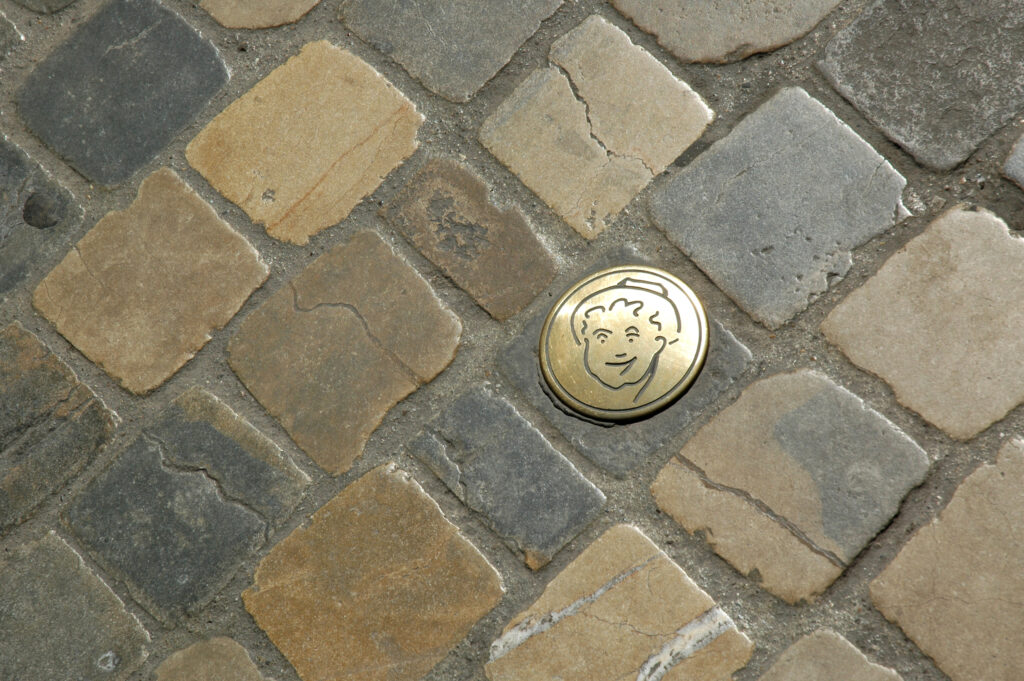
Charles Trenet's birthplace is a museum in Narbonne, in the south of France. It is housed in the house where the famous French singer and songwriter Charles Trenet was born in 1913.
The museum traces the life and career of Charles Trenet, from his early days to his international success. Personal objects, photos, posters, records and musical instruments belonging to the artist are on display. The museum also offers film screenings and concerts, as well as activities and workshops for children. As you pass through the door of the artist's home, you'll enter Trenet's private world and his special place of inspiration, a poetic universe of nostalgia and memories.
12. What to do in Narbonne Go to Narbonne-Plage
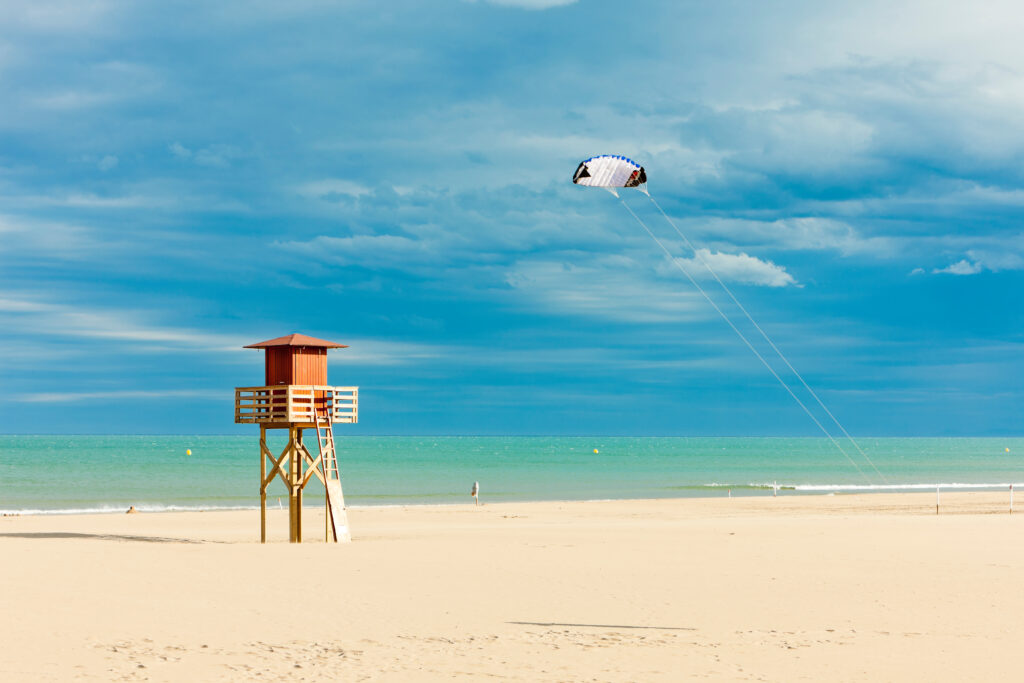
The seaside resort of Narbonne-Plage, 15 km from Narbonne, is nestled between sea and lake, surrounded by the Clape massif, and boasts exceptional sunshine, 5 km of fine sandy beaches and crystal-clear waters. The resort offers a wide range of activities, including swimming, sailing, kitesurfing, paddleboarding, scuba diving and sea fishing. Its many and varied summer events, diverse shops and bars will enchant your evenings. "C'est la mer au ciel d'été que l'on voit danser le long des golfes clairs", sung by Charles Trenet.
13. Taste the region's culinary specialties
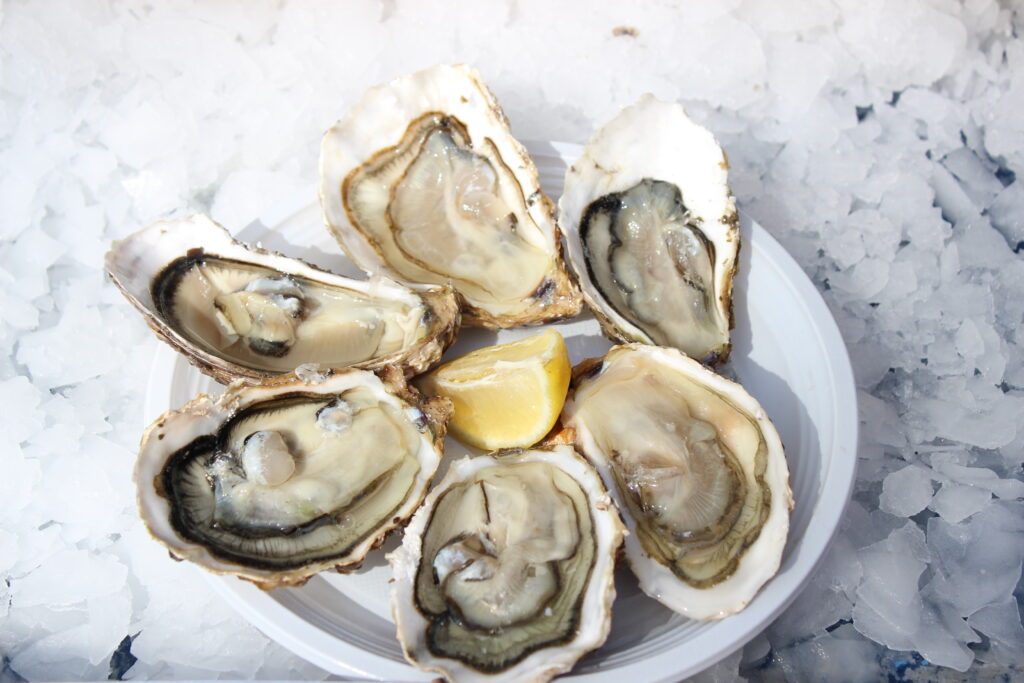
Narbonne and the surrounding region are renowned for their culinary specialties, which reflect the richness and diversity of the local gastronomy. The region's culinary specialities include oysters from Bouzigues, mussels from the Etang de Thau, anchovies from Collioure, olives from Lucques, sheep's and goat's cheeses, charcuterie and pastries. Languedoc wines, such as Corbières, Minervois and Fitou, are also renowned for their quality and diversity.
To sample the region's culinary specialties, you can visit the restaurants, wine bars and wine cellars in and around Narbonne. Les Halles de Narbonne, a covered market located in the city center, also offers a wide variety of fresh, quality produce.
14. Enjoy the countryside in the Narbonnaise Regional Park

Welcome to the Aude, a region that combines Pyrenean landscapes with sandy beaches! The Parc régional de la Narbonnaise is a protected natural area near Narbonne, in the south of France. It covers more than 80,000 hectares and offers a wide variety of landscapes, from ponds and hills to vineyards and garrigues. The park offers numerous hiking trails, enabling visitors to discover the region's landscapes and flora and fauna. The Narbonnaise Regional Park also offers water sports activities such as sailing, kayaking and fishing on the Bages-Sigean and Ayrolle ponds. Cycling, mountain biking, horse riding and climbing are also available.
15. What to do in Narbonne An electric boat trip
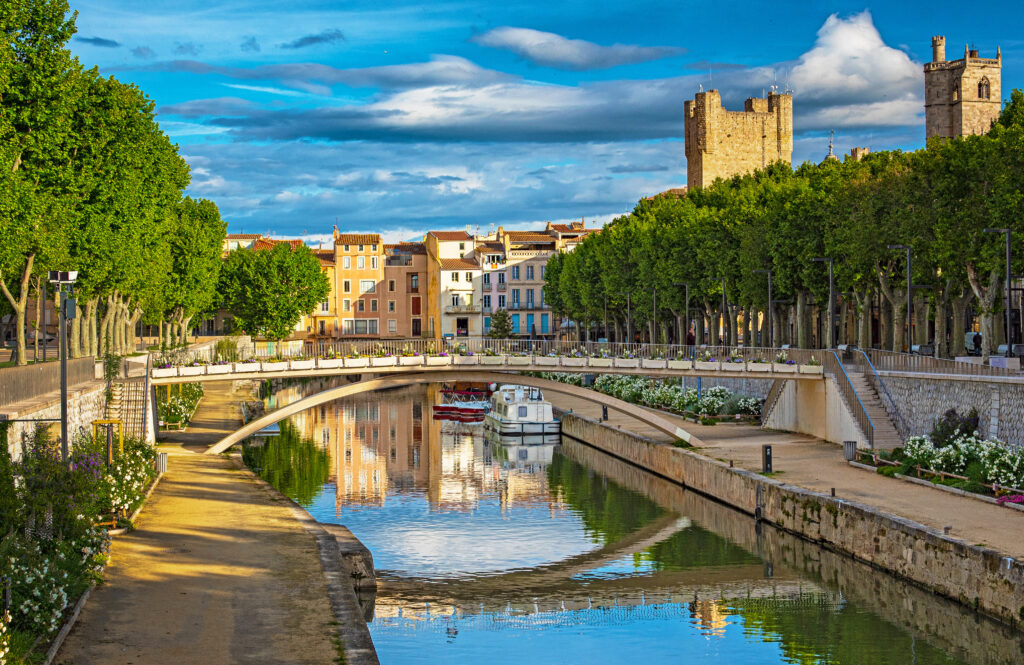
Domaine de Sainte-Marthe is a vineyard located near Narbonne, in the south of France. It offers guided tours of its cellars and vineyards, as well as wine tastings. But one of the most original and enjoyable activities offered by Domaine de Sainte-Marthe is the electric boat trip on the Canal de la Robine. You'll discover the region's landscapes and heritage in an original, eco-friendly way. The Canal de la Robine, which runs through Narbonne and links the Canal du Midi to the Mediterranean Sea, is lined with century-old plane trees, gardens and parks, and offers a breathtaking view of the city's historic monuments, such as the Saint-Just-et-Saint-Pasteur cathedral and the Palais-Musée des Archevêques.
16. Hiking on the Massif de la Clape
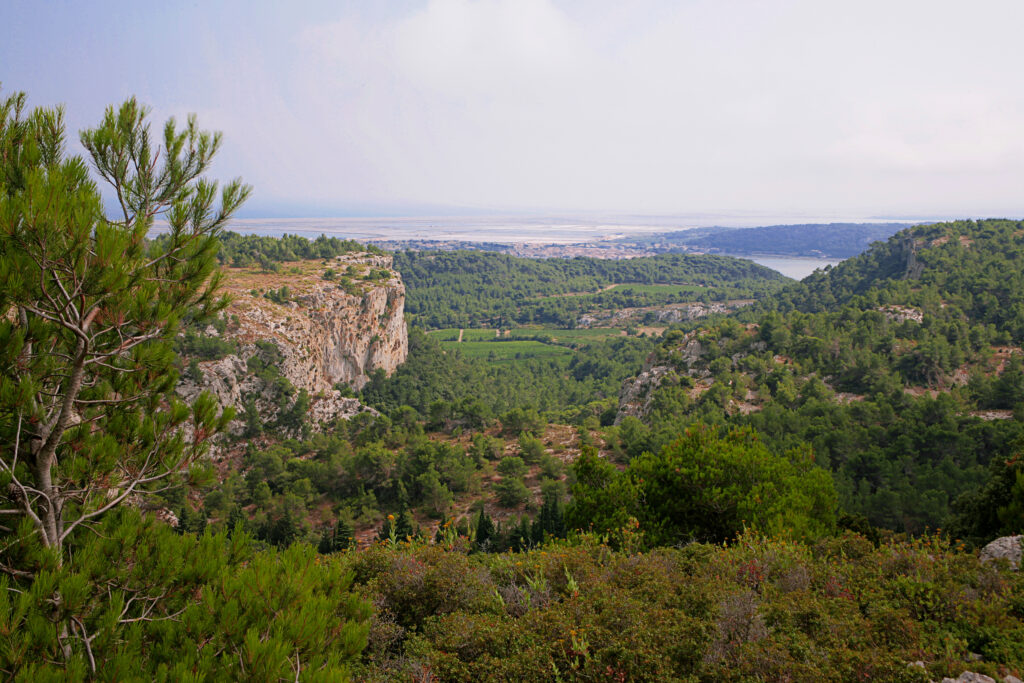
The Massif de la Clape is a mountainous massif near Narbonne in southern France. It covers more than 15,000 hectares and offers a wide variety of landscapes, from cliffs and creeks to vineyards and garrigues. The massif offers numerous hiking trails, allowing you to discover the region's landscapes and flora and fauna. Numerous bird species can be seen, including Bonelli's eagles, peregrine falcons and European rollers, as well as wild animals such as wild boar, foxes and roe deer. Cycling, mountain biking, horse riding and climbing are also available.
Are you a hiking enthusiast? Check out our Top 13 hikes in the Pyrenees.
What to do in Narbonne for young people?
Narbonne is a dynamic city with a wide range of activities for young people. Here are a few ideas for things to do if you're a young traveler:
- Stroll the streets of the city center and discover the trendy boutiques, bars and restaurants.
- Take abreak in one of the city's lively squares, such as Place de l'Hôtel de Ville or Place des Quatre-Fontaines, for a drink or an ice cream.
- Visit the city's museums, such as the Musée d'Art et d'Histoire or the Musée Narbo Via, to learn more about Narbonne's history and culture. Are you a history buff? Discover the most beautiful medieval villages in the region!
- Bronze on the beaches of Narbonne-Plage or Gruissan, just a few kilometers from the city.
- Enjoy outdoorsports such as cycling, hiking or kitesurfing in the region's many natural areas.
- Go out in the evening in the town's bars and clubs, such as Pub Saint-Paul or Café de la Bourse.
What's there to do in and around Narbonne?
Narbonne and the surrounding area offer a wide range of activities for the whole family. Here are a few ideas for outings with your children:
- Visit the Sigean African Reserve, a wildlife park housing over 3,800 animals in semi-liberty, including lions, giraffes, rhinoceroses and elephants.
- Stroll through the gardens of Fontfroide, a former Cistercian monastery surrounded by magnificent formal gardens.
- Take a boat trip on the Canal de la Robine, which crosses Narbonne and offers beautiful views of the city and its monuments.
- Discover the étangs de Bages-Sigean and de l'Ayrolle, preserved natural sites where you can observe numerous birds and enjoy the beach.
- Visit the Château de Quéribus, a Cathar castle perched on a rocky outcrop, offering a breathtaking view of the Pyrenees and the Mediterranean. Interested? Discover our dedicated article"The 15 most beautiful Cathar castles to visit in Occitanie".
Where to stay in Narbonne?
Narbonne offers a wide range of accommodation to suit all budgets and tastes. If you want to be right in the heart of the action and close to historic monuments and shops,Narbonne's city center is an ideal choice, with numerous hotels, apartments and bed & breakfasts. Located close to the SNCF train station, the station district offers affordable accommodation and good public transport links. Located on the left bank of the Canal de la Robine, the Bourg district is a historic and picturesque area offering charming accommodation, including guest houses and vacation apartments.
Discover our favorite accommodations in Narbonne:
An architectural marvel! Francisco and Maria imagined this place as a living space where the contemporary blends perfectly with the charm of the old. From the landscaped entrance hiding the pool area, to the cosy lounge, you're sure to fall under its spell. The restaurant serves Franco-Italian-Argentine cuisine. In short, a beautiful and gourmet address that you can book right here.
- The cheapest: ibis budget Narbonne Est
Looking for a single room and a comfortable bed at a low price? This low-cost hotel is the perfect option for an inexpensive stopover in Narbonne. The rooms are simple and clean, with TV, private bathroom, desk area and free wi-fi... Click here to book your stay.
It's impossible not to fall under the spell of this superb Narbonne establishment dedicated to comfort and art, which you can book right here. In this former manor house, Julie Fontanet, the hostess, has created a veritable living space based on the themes of femininity, romance and Bacchus. Here, the works of women artists, whose vernissage is held once a season, take center stage,
Find outmore about our favorite Narbonne accommodations right here !
Tempted by a vacation in Narbonne? See our article on What to do in Occitanie? The 21 most beautiful places to visit and discover below the trendiest activities to do during a stay in Narbonne :
Tempted by our selection? Take a look at our train fares and book now!


